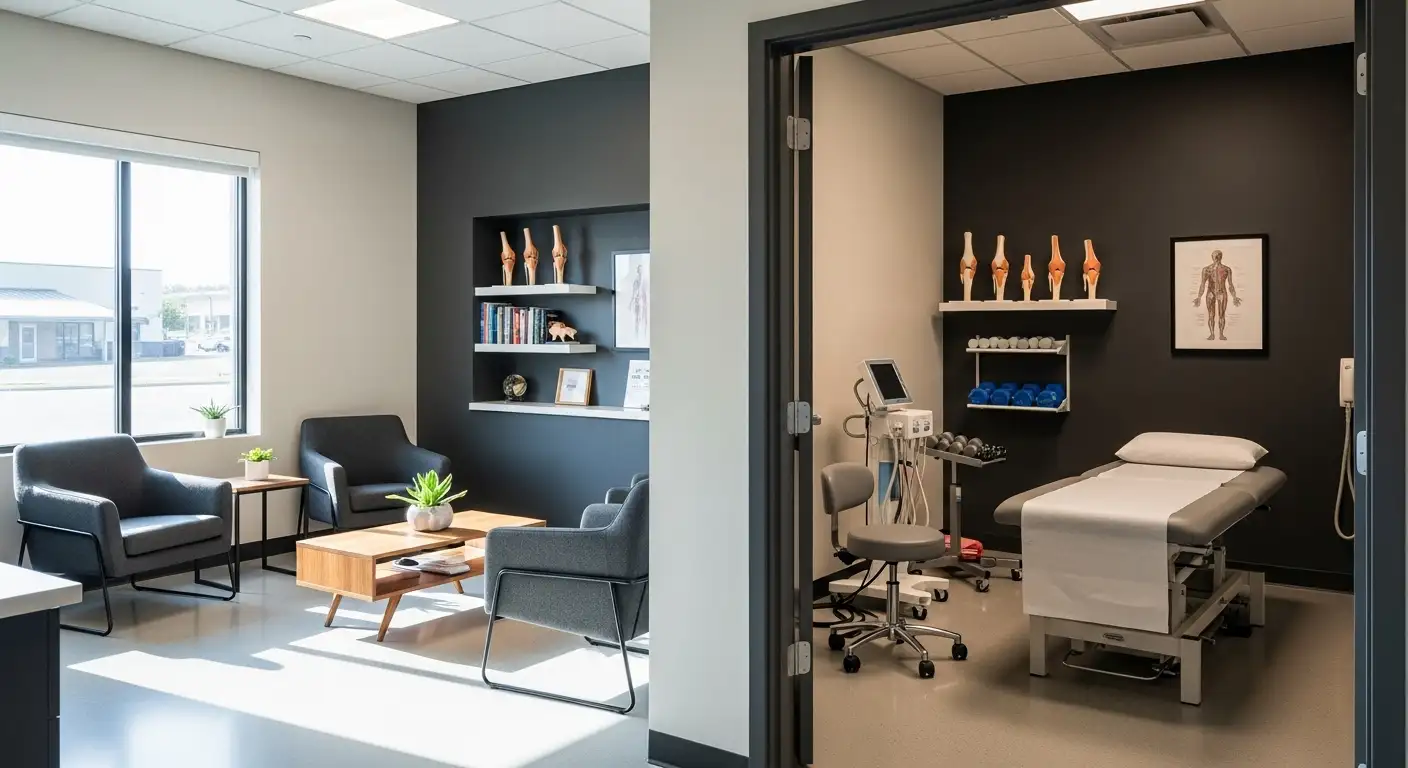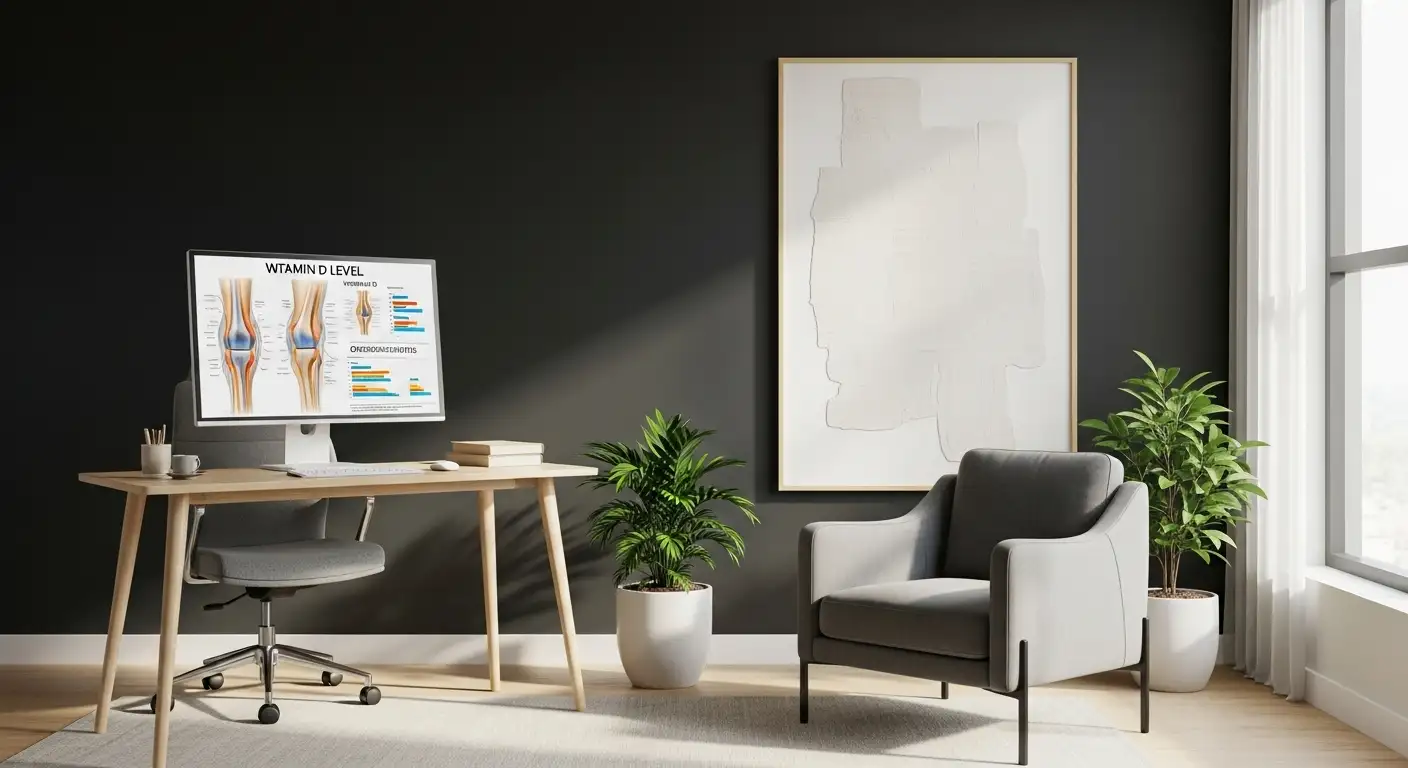Understanding Knee Pain
Knee pain is a common condition that can affect individuals of all ages, often causing discomfort and reduced mobility. This section will delve into the main causes and types of knee pain, helping readers understand what could be behind their symptoms, especially sharp stabbing pain that comes and goes at night.

Causes of Knee Pain
Knee pain can be attributed to various factors, which include:
Many instances of minor knee pain respond well to self-care measures, while more severe cases may require surgical intervention. According to the Mayo Clinic, knee pain may derive from overuse, injury, or arthritis, with some cases leading to chronic pain that necessitates ongoing treatment.
Types of Knee Pain
Understanding the different types of knee pain can assist individuals in identifying their symptoms:
By identifying the type and cause of knee pain, individuals can better navigate their treatment options and understand the importance of seeking medical advice when necessary.
Sharp Stabbing Pain in Knee
Sharp stabbing pain in the knee can arise from various conditions, particularly soft tissue injuries and fractures. Understanding these causes can help individuals seek appropriate treatment and management for their knee discomfort.
Soft Tissue Injuries
The most common cause of sharp knee pain is an injury to the soft tissues surrounding the knee joint. Conditions such as inflammation of the knee bursa or damage to the knee cartilage can result in intense, stabbing pain. These injuries often occur during physical activities or can be related to overuse.
Soft Tissue Injury TypePotential SymptomsKnee Bursa InflammationSharp pain, swelling, tendernessTorn CartilageSharp pain, knee locking, swellingLoose BodiesIntermittent sharp pain, occasional locking
Cartilage tears, especially, can lead to significant discomfort. When fragments of cartilage break off, they can become lodged in the joint, causing considerable pain and the sensation of the knee locking [2]. Additionally, loose bodies in the knee, like small bone fragments or torn pieces of cartilage, can cause acute pain that may fade when the loose material is dislodged [2].
Fractures Affecting the Knee
More severe cases of sharp stabbing knee pain can arise from fractures affecting the knee, including fractures of the tibial plateau or femoral condyles. Such injuries typically present with intense pain, swelling, and difficulty moving the knee.
Fracture TypeCommon SymptomsTibial Plateau FractureSevere pain, swelling, immobilityFemoral Condyle FractureIntense pain, inability to bear weight
Intense shooting pain experienced while resting may suggest serious issues like nerve irritation, arthritis, or underlying fractures impacting the knee [1]. Early diagnosis and treatment are crucial for effective management of these conditions.
Common Knee Pain Conditions
Understanding common conditions that lead to knee pain can help individuals identify the source of their discomfort. Here are three prevalent knee pain conditions that may cause symptoms such as sharp stabbing pain in the knee that comes and goes at night.
Patellofemoral Joint Pain
Patellofemoral joint pain, often referred to as "runner's knee," occurs when the kneecap (patella) does not move smoothly in its groove. This condition can lead to sharp pain in the front part of the knee, especially during activities such as running, squatting, or climbing stairs. In some cases, a dislocated kneecap can develop, causing intense pain that may require medical intervention for relocation. Individuals experiencing this type of pain should consider discussing their symptoms with a healthcare professional for personalized treatment options [1].
SymptomDescriptionLocationFront of the kneePain QualitySharp and often accompanied by a popping soundActivities that Trigger PainRunning, squatting, stair climbing
Meniscus Tears
Meniscus tears occur in the cartilage that acts as a cushion between the thigh bone and shin bone. This injury often results in sharp pain along the knee joint line. The symptoms may intensify with certain movements, particularly deep squats or twisting of the knee. Individuals may also experience swelling and a feeling that their knee is locking. Those with these symptoms should consider consulting a medical professional to determine the best course of action [1].
SymptomDescriptionLocationJoint line of the kneePain QualitySharp, may intensify with movementAccompanying SymptomsSwelling, locking sensation
Dislocated Kneecap
A dislocated kneecap occurs when the patella moves out of its normal position, often resulting from a fall or a sudden twist of the knee. This condition leads to sharp, severe pain in the front of the knee and may require immediate medical attention to relocate the patella. It is important to avoid moving the knee until a healthcare provider can assess and treat the dislocation [1].
SymptomDescriptionLocationFront of the kneePain QualityIntense, sharpTreatmentMedical intervention may be required
These common knee pain conditions can significantly impact daily activities. Recognizing symptoms early can lead to timely care and better outcomes. For further insights into managing specific knee pain, individuals may refer to topics such as can tight hamstrings cause knee pain or knee wrap for pain.
Knee Pain Management
Managing knee pain effectively involves a combination of medical treatments and self-care strategies. This section discusses various pain management treatments and self-care measures for those experiencing sharp stabbing pain in the knee that comes and goes at night.
Pain Management Treatments
For individuals experiencing more severe or chronic knee pain, several medical treatments can be considered. Some of the key pain management treatments include:
Treatment OptionDescriptionViscosupplementationAn injection that provides lubrication to the knee joint to reduce pain and improve mobility. Pain Care FloridaNerve BlocksAn injection that blocks pain signals from a specific nerve, offering temporary relief.Joint InjectionsCorticosteroids can be injected directly into the knee joint to reduce inflammation and pain.PRP TherapyPlatelet-rich plasma therapy uses injections of a concentration of platelets to promote healing.
Although surgery may be necessary in some cases, many individuals find relief through these less invasive methods. Consult a healthcare professional to discuss the most appropriate treatment for your specific condition.
Self-Care Measures
In addition to professional treatments, individuals can also adopt various self-care measures to help alleviate knee pain. These techniques can be effective, particularly for minor injuries or discomfort.
Self-Care MeasureDescriptionIce ApplicationApplying ice to the affected area can reduce swelling and numb pain.CompressionUtilizing a knee wrap for pain can provide support and decrease swelling. knee wrap for painElevationElevating the leg helps minimize swelling by reducing blood flow to the area.Gentle ExercisesEngaging in stretches and strengthening exercises can improve flexibility and support knee health. For example, the vastus medialis stretch can be beneficial.Activity ModificationAdjusting daily activities to avoid strains on the knee can help reduce discomfort.
These self-care measures can be effective and provide immediate relief. It is important to involve healthcare professionals for ongoing pain assessment and ensure that the chosen methods are appropriate for the individual's specific situation. Awareness of knee pain causes can significantly impact the overall management strategy for those experiencing this condition, especially considering risks tied to falls or other knee injuries can tight hamstrings cause knee pain.
Adopting a proactive approach, including both treatment and self-care, can greatly improve quality of life for those dealing with knee pain.
Swollen Knee and Sharp Pain
Understanding the causes and treatment options for a swollen knee accompanied by sharp stabbing pain can help in managing symptoms effectively.
Swollen Knee Causes
A swollen knee can result from various factors, including trauma, overuse injuries, or underlying diseases. Common causes include:
CauseDescriptionTraumaInjury from falls or collisions can lead to swelling.Overuse InjuriesRepetitive activities may cause inflammation and swelling.ArthritisConditions like osteoarthritis or rheumatoid arthritis can contribute to swelling and pain.InfectionSynovial fluid in the knee may become infected, leading to swelling.Gout or PseudogoutCrystals forming in the joint can cause swelling and sharp pain.
A healthcare provider may require tests, including fluid samples, to identify the underlying cause of the swelling [3].
Symptoms and Treatment
The symptoms associated with a swollen knee may include sharp stabbing pain that comes and goes, particularly at night, as well as stiffness in the joint [3]. Effective treatment often requires addressing the underlying cause, which may involve:
Treatment OptionDescriptionRest and IceResting the knee and applying ice can help reduce swelling.CompressionUsing a knee wrap for pain relief may assist in reducing swelling.ElevationKeeping the knee elevated helps decrease fluid accumulation.MedicationNonsteroidal anti-inflammatory drugs (NSAIDs) may alleviate pain and inflammation.Physical TherapyRehabilitation can strengthen muscles around the knee for better support.
If the knee remains swollen or the pain persists, further evaluation by a healthcare professional is essential. For those dealing with tight hamstrings, which may contribute to knee pain, exploring the link with can tight hamstrings cause knee pain may provide additional insights into prevention and recovery.
Preventing and Treating Knee Injuries
Knee injuries can lead to discomfort and conditions such as sharp stabbing pain in knee that comes and goes at night. To prevent and effectively treat these injuries, various programs and conservative treatments are available.
Injury Prevention Programs
Participating in structured injury prevention programs can help reduce the risk of knee injuries, especially for individuals involved in sports or high-impact activities. These programs typically focus on strengthening the muscles surrounding the knee, improving flexibility, and enhancing overall body mechanics. Key components often include:
To effectively implement these programs, it is beneficial to consult with a physical therapist who can tailor a routine based on individual needs and conditions.
Conservative Treatments
For those experiencing knee pain, conservative treatment options can be effective in managing symptoms. These treatments aim to provide relief while minimizing the need for invasive procedures. Common conservative treatments include:
Treatment TypeDescriptionPhysical TherapyA physical therapist develops a customized exercise program to strengthen knee-supporting muscles and improve function.BracingUsing devices like a knee hyperextension brace or a quadriceps tendonitis brace can help stabilize the knee during recovery.Rest and IceAllowing time for rest and applying ice can help reduce swelling and pain.Nonsteroidal Anti-Inflammatory Drugs (NSAIDs)Over-the-counter medications can help alleviate pain and reduce inflammation.InjectionsCorticosteroid injections may provide temporary relief for inflamed areas.
It is essential to follow the advice of healthcare professionals tailored to the individual’s specific condition. For individuals frequently on their knees, utilizing best knee pads for work can provide additional support and prevent further injury.
By following structured injury prevention programs and incorporating conservative treatment strategies, individuals can effectively manage their knee health and minimize the potential for future injuries. Understanding these options is crucial for maintaining an active lifestyle while mitigating the sharp stabbing pain in the knee that can disrupt nightly rest.
References
[2]:
[3]:





